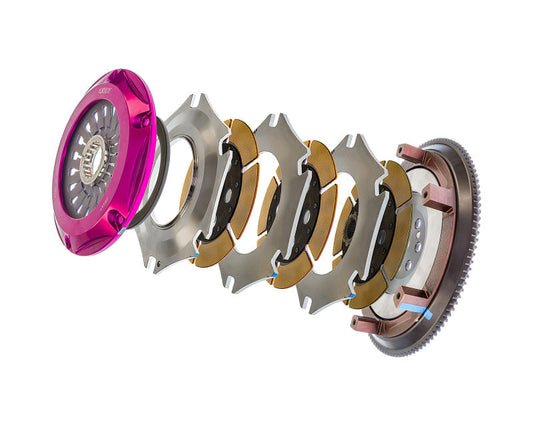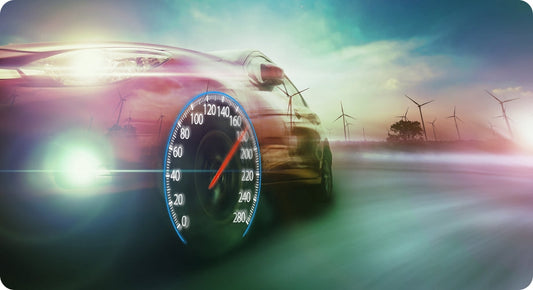When upgrading your wheels, offset and backspacing are two critical measurements that determine how your new rims will fit and perform. The wrong offset or backspacing can lead to fitment issues, poor handling, and clearance problems with your fenders or suspension. At WOT Performance Parts, we provide high-quality wheels and expert guidance to ensure the perfect fit for your vehicle. Contact WOT Performance Parts today for more information!
What Is Wheel Offset?
Offset is the distance between the wheel’s mounting surface and its centerline. It determines how far the wheel sticks out or tucks in relative to the vehicle’s fenders. Offset is measured in millimeters (mm) and falls into three categories:
1. Positive Offset
-
The mounting surface is closer to the outer face of the wheel.
-
Common in factory wheels and FWD vehicles.
-
Keeps wheels tucked inside the wheel well.
-
Reduces fender clearance issues but may not provide an aggressive stance.
2. Zero Offset
-
The mounting surface is perfectly centered in the middle of the wheel.
-
Often found on performance and off-road wheels.
-
Provides a balanced look without excessive poke or tuck.
3. Negative Offset
-
The mounting surface is closer to the inner side of the wheel.
-
Common in off-road, deep-dish, and wide-body applications.
-
Pushes wheels outward for a more aggressive stance.
-
May require fender modifications or wider flares to prevent rubbing.

What Is Backspacing?
Backspacing is the distance from the wheel’s mounting surface to the inner edge of the rim (measured in inches). This determines how much clearance your wheel has from the suspension, brakes, and fender.
How Backspacing Affects Fitment
-
Too Much Backspacing (High Number):
-
The wheel sits too far inward, causing potential rubbing on suspension components.
-
Common in OEM-style wheels.
-
Too Little Backspacing (Low Number):
-
The wheel sticks outward, improving clearance from the suspension but increasing fender poke.
-
Found on off-road and wide-stance performance setups.
Offset Vs. Backspacing: What’s The Difference?
Both offset and backspacing affect how a wheel sits on your vehicle, but they measure different aspects:
-
Offset (mm): Measured from the wheel’s centerline to the mounting surface.
-
Backspacing (inches): Measured from the inner rim edge to the mounting surface.
A change in offset affects backspacing, so it’s crucial to balance both when selecting new rims.
How To Choose The Right Offset And Backspacing
1. Consider Your Suspension & Brake Setup
-
High Offset (+35mm to +50mm): This is ideal for OEM fitment, FWD cars, and modern sports sedans.
-
Low Offset (+10mm to +25mm): Common in wide-body builds, RWD performance cars, and aggressive stance setups.
-
Negative Offset (-10mm to -25mm): Found in off-road, deep-dish wheels, and custom wide-stance vehicles.
-
Backspacing Around 4.5”-5.5” is standard for most performance and aftermarket wheels.
2. Know Your Fender And Wheel Well Clearance
-
If you want a flush fitment, Choose a moderate positive offset (+25mm to +35mm) to keep wheels close to the fender without rubbing.
-
For an aggressive stance: Opt for a lower offset (+10mm to -10mm), but be prepared for fender rolling or trimming.
-
To fit bigger brakes: Ensure enough backspacing (around 5.5”-6”) so that calipers clear the wheel spokes.
3. Match Rim Width To Offset
-
A wider wheel naturally pushes the tire outward, so a higher offset is needed to keep clearance in check.
-
Example: A 9” wide wheel with +35mm offset will sit similarly to an 8” wide wheel with +25mm offset.
4. Off-Road Vs. Street Fitment
-
Off-Road Trucks & SUVs:
-
Use negative offset wheels (-10mm to -25mm) for a wider track and better stability.
-
Requires fender flares to cover poke.
-
Performance & Street Cars:
-
Stick with moderate offsets (+25mm to +40mm) to ensure suspension clearance and a clean look.

Why Offset & Backspacing Matter For Performance
Selecting the right offset and backspacing affects more than just fitment—it also impacts handling, stability, and ride quality.
Improved Handling & Stability
-
A lower offset increases the car’s track width, improving cornering grip.
-
Too much outward poke can cause torque steer or tramlining on uneven roads.
Braking System Compatibility
-
Larger brake calipers require wheels with more backspacing to avoid interference.
-
Many performance wheels have caliper clearance charts to help you choose the right fit.
Avoiding Rubbing & Suspension Damage
-
Too much positive offset can push the wheel inward, causing it to rub against control arms or struts.
-
Too much negative offset can push the wheel outward, leading to fender rubbing and premature tire wear.
Upgrade Your Rims With WOT Performance Parts
At WOT Performance Parts, we provide high-performance wheels, spacers, and alignment tools to help you get the perfect stance and fitment. Whether you're looking for street, track, or off-road wheels, we have the best selection at unbeatable prices. Shop with us today and get the perfect wheels for your ride!






